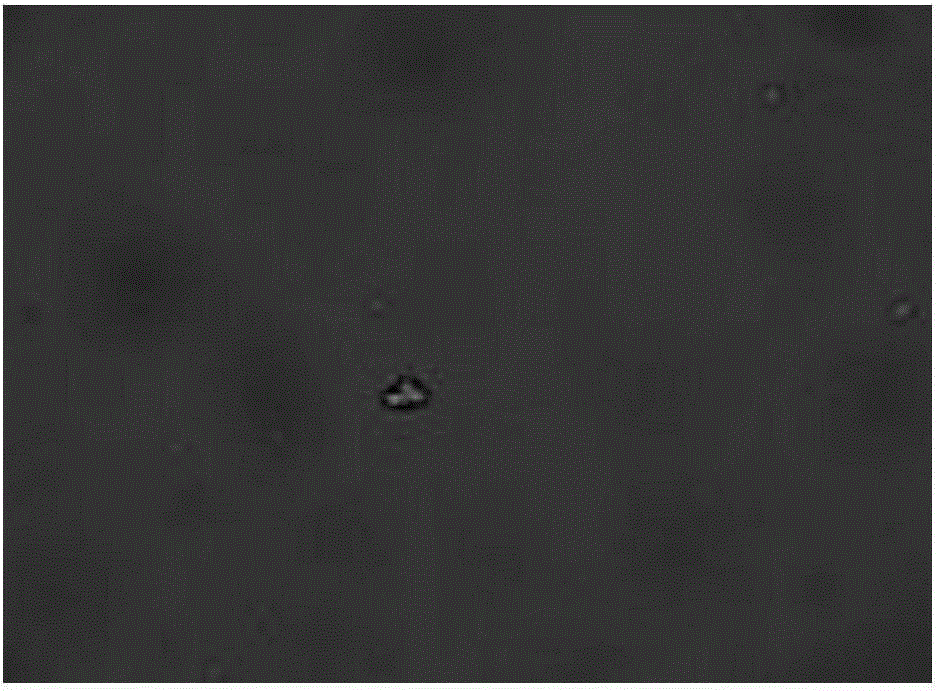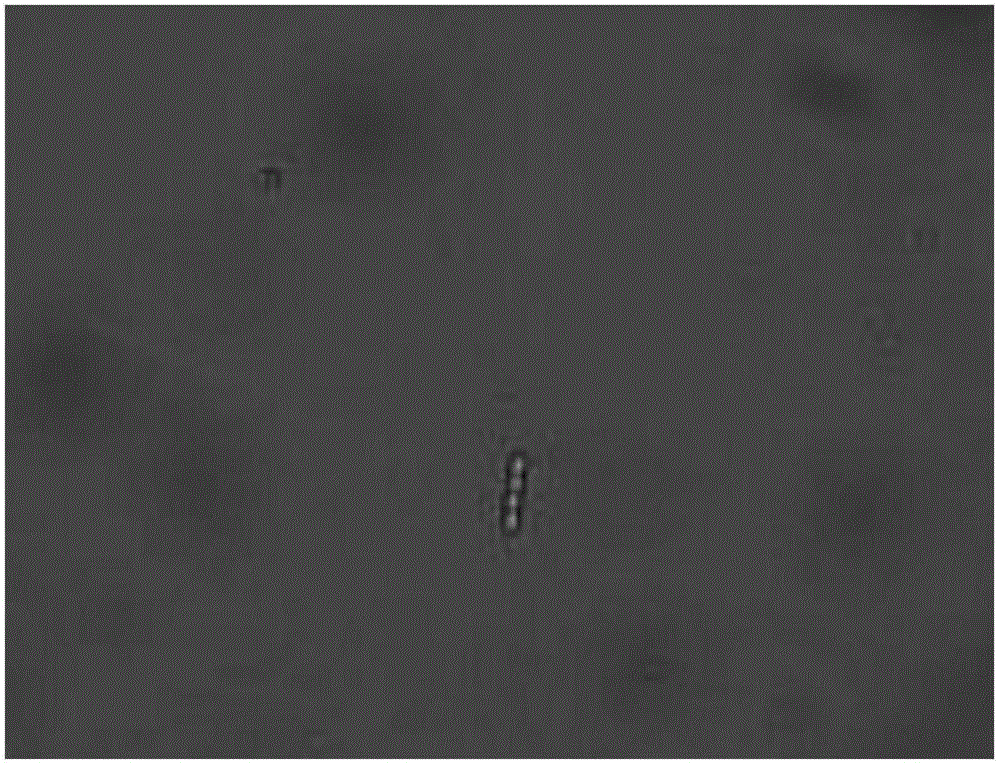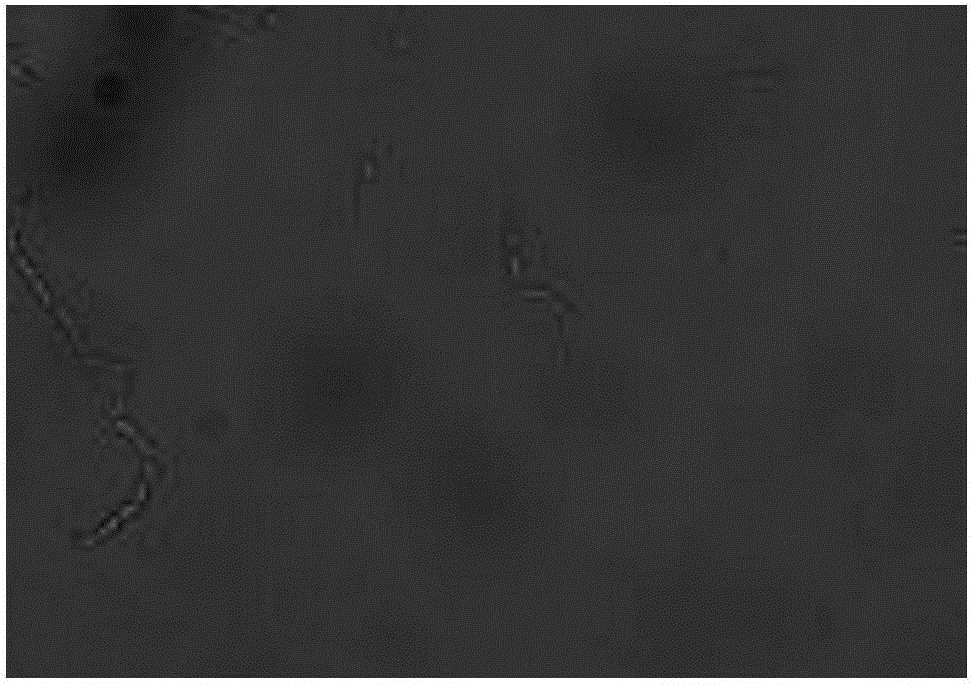Compound bacterium and treatment process for heavy-metal sewage treatment
A technology for complex flora and sewage treatment, which is applied in the field of complex flora and its treatment process, can solve the problems of low treatment efficiency and large amount of bacterial solution, and achieve the effects of improving treatment efficiency, reducing treatment costs, and slowing down the decline of bacteria
- Summary
- Abstract
- Description
- Claims
- Application Information
AI Technical Summary
Problems solved by technology
Method used
Image
Examples
Embodiment 1
[0037] In this example, the complex flora provided by the present invention is used to adsorb heavy metal sewage. The entire adsorption process lasts for about 10 minutes, and the electron microscope observation is carried out at the same time:
[0038] see figure 1 As shown, it is the electron micrograph of the complex bacterial flora at the initial stage of adsorption. It can be seen from the electron micrograph that the initial state of the bacteria is mostly dispersed individuals and short rod-shaped bamboo joints;
[0039] figure 2 and image 3 This is the electron micrograph of the complex bacterial flora in the middle stage of adsorption. It can be seen from the figure that while the heavy metal adsorption is being carried out, the bacillus cells are connected end to end to gradually form a strip-like bacterial chain, which is presumably due to the adsorption of heavy metal ions on the cell surface. The surface charge effect or the change of the chemical properties o...
Embodiment 2
[0043] 16SrDNA sequence identification is carried out respectively to 4 strain bacterial classifications provided by the present invention, and 16SrDNA is the most useful and the most commonly used molecular clock in the taxonomic research of bacterium, and its kind is few, and content is big (accounting for 80% of bacterial RNA content), molecular It is moderate in size and exists in all organisms. Its evolution has good clock properties and is highly conserved in structure and function, including the following steps:
[0044] Step 1: Select a single bacterial species for cultivation, and extract the bacterial genome after cultivation and expansion;
[0045] Step 2: Perform PCR amplification on the 16S rDNA sequence of the bacterial genome using 16S rDNA primers, the 16S rDNA primers used are 16S-F: AGAGTTTGATCCTGGCTCAG, 16S-R: ACGGCTACCTTGTTACGACTT;
[0046] Step 3: purifying the PCR product;
[0047] Step 4: Obtain the 16SrDNA sequence by DNA sequencing;
[0048] Step 5: ...
Embodiment 3
[0056] This embodiment is used to illustrate the complex flora treatment process of the heavy metal sewage treatment provided by the present invention, comprising the following steps:
[0057] Step 1: preparing a bean sprouts juice medium, inoculating at least one strain of Brevibacterium halotolerans strain CAS17, Bacillus sp.4014, Bacillus megaterium NBRC and Bacillus sp.1PPL-SC1 in the bean sprouts juice medium, Pass the filtered and sterilized air into the culture medium through the air pump, shake it on the shaker for 48 hours, the rotation speed is 200rpm, and the culture temperature is 30°C, until the treated bacterial liquid is golden yellow and viscous, which is the best;
[0058] Step 2: Detect the heavy metal content in the heavy metal wastewater to be treated, dilute with water according to the volume of the heavy metal wastewater, dilute the total heavy metal content to below 1000mg / L, add the same volume of treatment bacteria solution to the diluted heavy metal wa...
PUM
 Login to View More
Login to View More Abstract
Description
Claims
Application Information
 Login to View More
Login to View More - Generate Ideas
- Intellectual Property
- Life Sciences
- Materials
- Tech Scout
- Unparalleled Data Quality
- Higher Quality Content
- 60% Fewer Hallucinations
Browse by: Latest US Patents, China's latest patents, Technical Efficacy Thesaurus, Application Domain, Technology Topic, Popular Technical Reports.
© 2025 PatSnap. All rights reserved.Legal|Privacy policy|Modern Slavery Act Transparency Statement|Sitemap|About US| Contact US: help@patsnap.com



